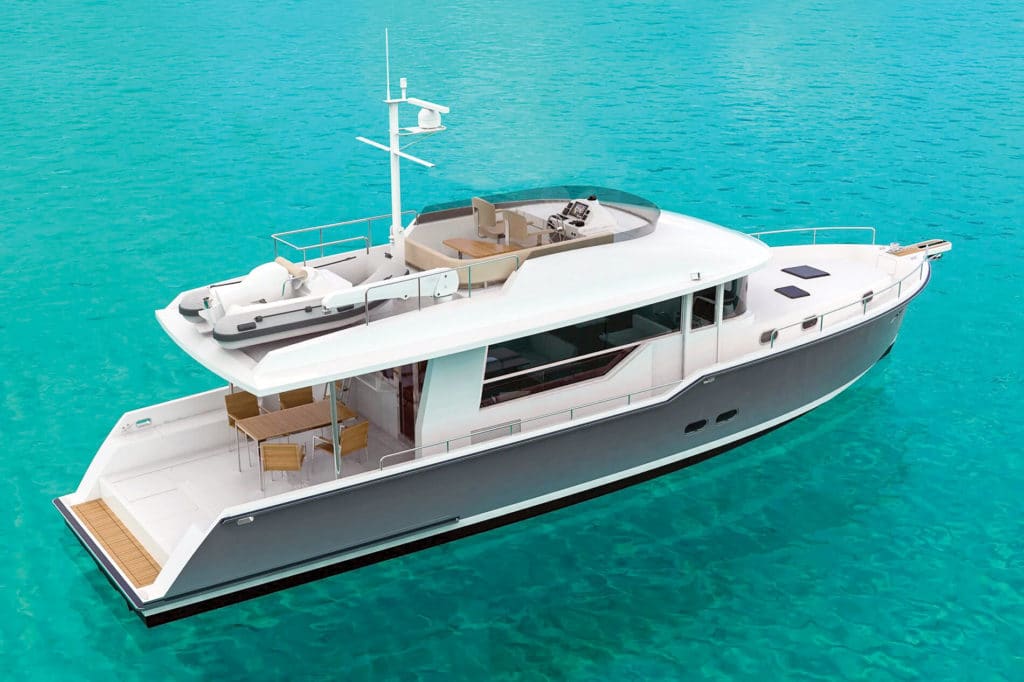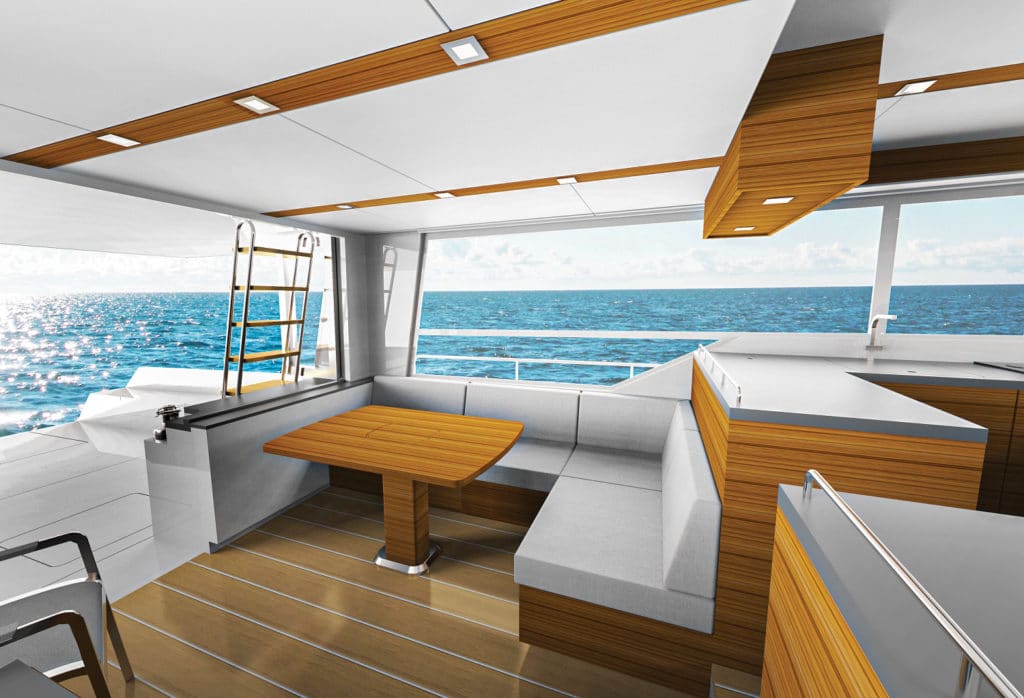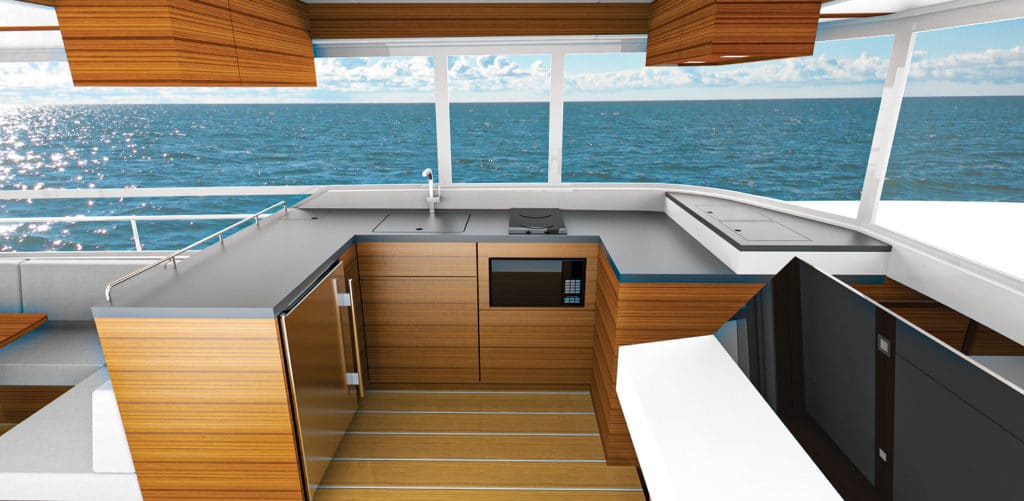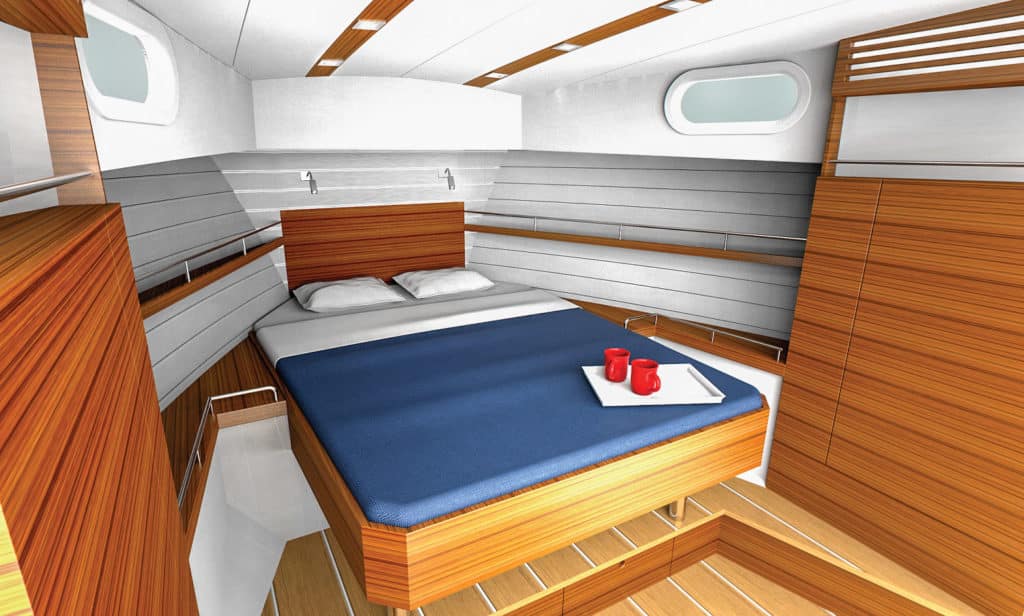
The Outback 50 is not named for the Australian expanse but rather for this yacht’s 16 feet of deck space aft. The builder refers to the cockpit as an “infinity deck,” accommodating a 16-foot RIB, a pair of personal watercraft, a barbecue, dining table for six, flats boat or, should an owner want it, pingpong table. (When going with the pingpong table, I’d suggest the optional Seakeeper gyrostabilizer too.)
If an owner wants traditional alfresco dining, then the tender can be moved up top. The 50’s flybridge has room aft for a davit. Forward on the flybridge are a two-seat helm on centerline and an L-shaped settee abaft it to starboard.

Back on the main deck, cockpit sliding doors to starboard and a window to port open for an indoor-outdoor space, connecting guests at the salon’s L-shaped settee to port with those in the cockpit.
Performance is also a key attribute of the Outback 50. To hone the yacht’s speed and efficiency, the Michael Peters-penned craft has a narrow beam and is relatively lightweight. Built with solid fiberglass below the waterline and cored composites above it, the 50 has a 32,000-pound half-load displacement. That weight is based on the yacht’s standard power: twin 270 hp Volvo Penta D4 diesels. Hull No. 1 will have optional 425 hp Cummins diesels.

The engines are placed under the cockpit and accessed via a centerline hatch. The location should help keep the yacht’s interior quiet. It should also ease maintenance—or even major repair should the diesels need to be removed.
With standard motors, the 50 has a projected top-end speed of about 20 knots. Cruise speed will be 16 knots. With the optional Cummins diesels, cruise is expected to be 20-plus knots. At 12 to 15 knots, the 50’s cruising range is said to be about 300 nautical miles. At 8 knots, the builder says range increases to around 1,000 nautical miles with either engine setup. Efficiency is also helped by running gear set into prop pockets, reducing shaft angle. Draft is 3 feet with a keel.

The builder says another ingredient in the Outback 50’s performance is the fact that the vessel’s trim angle is a mere 2 degrees when running from 5 knots up to her top hop. An increased trim angle means more resistance and, in turn, reduced efficiency. Because the 50 runs steadily at 2 degrees, the yacht is not fighting to get over the hump and onto plane.
Take the next step: outbackyachts.com








